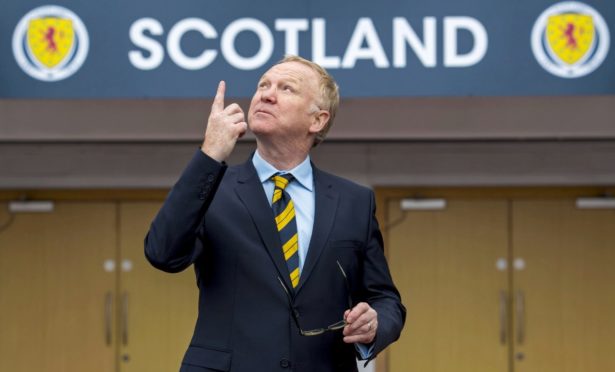The appointment of Alex Mcleish as Scotland boss by the SFA board makes the average bowling club committee look like progressive revolutionaries by comparison to Scottish football’s governing body.
Alex McLeish is naturally ecstatic to be handed the national team job again.
All Scotland fans will hope the move is a success but among many supporters the appointment smacks of panic and backward thinking.
Having publicly targeted Northern Ireland boss Michael O’Neill as the favoured candidate, chief executive Stewart Regan fell on his sword after the long-running saga ended in a humiliating rebuff from the Irishman.
The SFA board cannot escape complicity in the utter shambles and inept handling of that monumental cock-up, which left any other candidate looking like an afterthought.
Having apparently lost faith in Regan after his handling of that farrago, they’ve now appointed McLeish without a chief executive in place.
If they have the power to make the managerial appointment now they must surely also bear responsibility, along with the departed Regan, for the failure to land O’Neill.
Any new chief executive will have to work closely with the new manager and the SFA board should have waited until appointing that key figure before naming a new boss.
It is symptomatic of the lack of strategic thinking and planning which has blighted the game in Scotland.
From the chaotic Project Brave, which aimed to reinvent Scottish youth football only to disenfranchise many hard-working clubs who couldn’t meet the exorbitant costs, to the dithering decision-making over where the national team should play its future home games, to managerial mayhem, the SFA is firmly fixed in the minds of many fans as ‘Not fit for purpose.’
In fairness to the SFA, I have some sympathy with them in the modern football environment.
They are faced with an impossible dilemma. They exist to govern and oversee the completely disparate interests of everyone from the biggest clubs in the land right through to schools football, and self interest will always be to the fore.
The possibilities of conflicts of interest are endless, and it’s impossible to accommodate every competing demand.
Some folk view the SFA as tainted over the long-running Rangers situation, others see it as running the game in the interests of the big two in Glasgow, while yet others are convinced that the folk running it are complete incompetents.
President Alan McRae, who is also the honorary president of Highland League club Cove Rangers, attracts flak from those who feel the governing body requires a much more experienced and senior figure in football to hold a position of major influence.
With the SFA seemingly incapable of change, their biggest threat isn’t from evolution or even revolution – it’s from apathy. The possibility of increasing desertion from the ranks of the Tartan Army, who despair of ever seeing a successful international team, and the trend of fans to place club before country, with Celtic chief executive Peter Lawwell predicting increased involvement by Scotland’s big clubs in revamped European competition in the coming years.
The SFA have become dinosaurs and we all know what their fate was.




